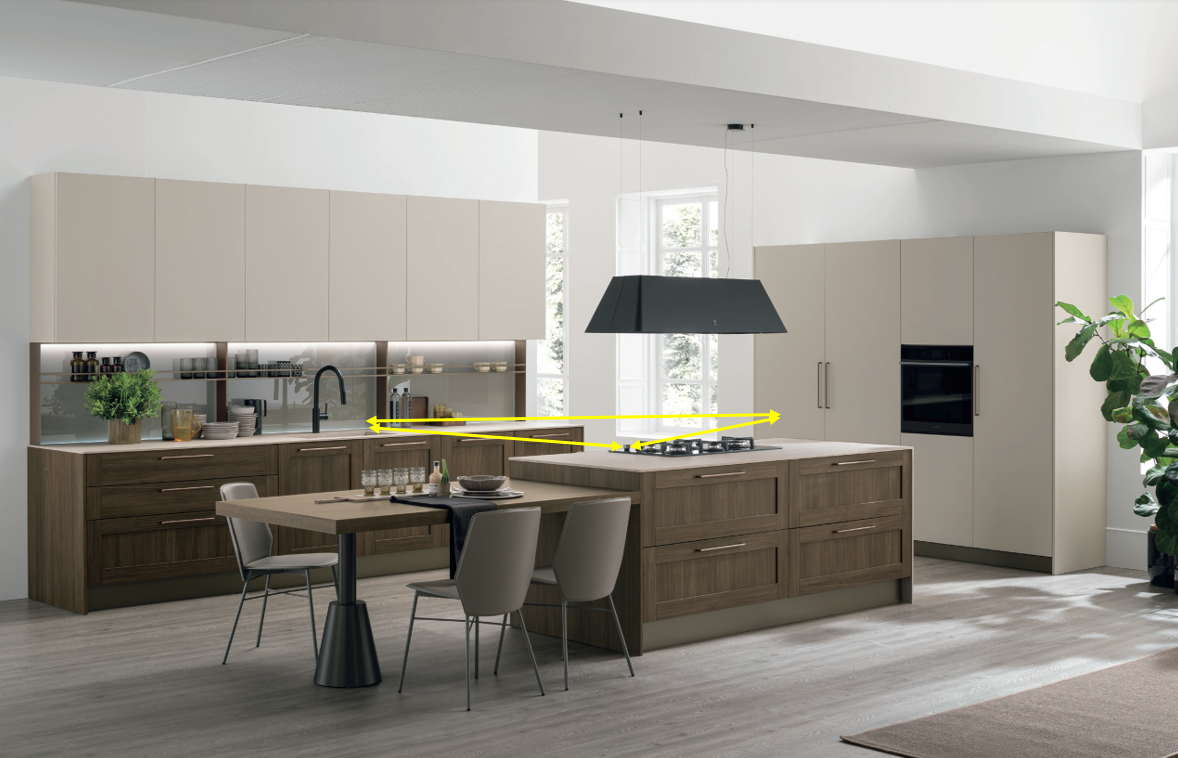A well-designed kitchen is not just about aesthetics but also about functionality and convenience. In North America, established standards guide the distances between various work centers to ensure an efficient and ergonomic culinary space.
1. Work Triangle Concept:
At the heart of North American kitchen design is the concept of the work triangle. This triangle connects the three primary work centers in the kitchen: the sink, the stove, and the refrigerator. The idea is to create an efficient layout that minimizes unnecessary movements and enhances workflow.
2. Distances Between Work Centers:
-
Sink to Stove:
- The distance between the sink and stove is a critical consideration. Ideally, there should be a clear and unobstructed path between these two work centers to facilitate the easy transfer of pots, pans, and ingredients. The standard distance is recommended to be between 12 to 36 inches.
-
Sink to Refrigerator:
- The sink and refrigerator are two frequently used areas in the kitchen. Maintaining a reasonable distance (ideally between 36 to 72 inches) ensures that you can seamlessly move from washing and prepping at the sink to accessing fresh produce in the refrigerator.
-
Stove to Refrigerator:
- The distance between the stove and refrigerator should be carefully considered. This ensures that ingredients can be easily transferred from the refrigerator to the stove during cooking. The recommended standard distance is typically between 36 to 72 inches.
3. Additional Considerations:
-
Clear Pathways:
- It’s essential to maintain clear pathways between these work centers. Avoiding obstacles and ensuring there’s enough space for movement contribute to a safer and more efficient kitchen.
-
User Convenience:
- Consider the convenience of the primary kitchen user. The goal is to minimize unnecessary steps, making it more comfortable to move between work areas and enhancing the overall cooking experience.
4. Flexibility in Design:
While these standards provide valuable guidelines, flexibility in design is also crucial. Individual preferences, kitchen size, and layout variations may necessitate adjustments to these distances. Customizing the work center layout to suit specific needs ensures a kitchen that aligns perfectly with the user’s lifestyle.
In conclusion, North American standards for work center distances aim to create kitchens that are not only aesthetically pleasing but also highly functional. Adhering to these guidelines ensures an optimized layout, promoting efficiency and ease of use in the heart of every home. Whether you’re a seasoned chef or an occasional cook, these standards contribute to a kitchen that is a joy to work in.
